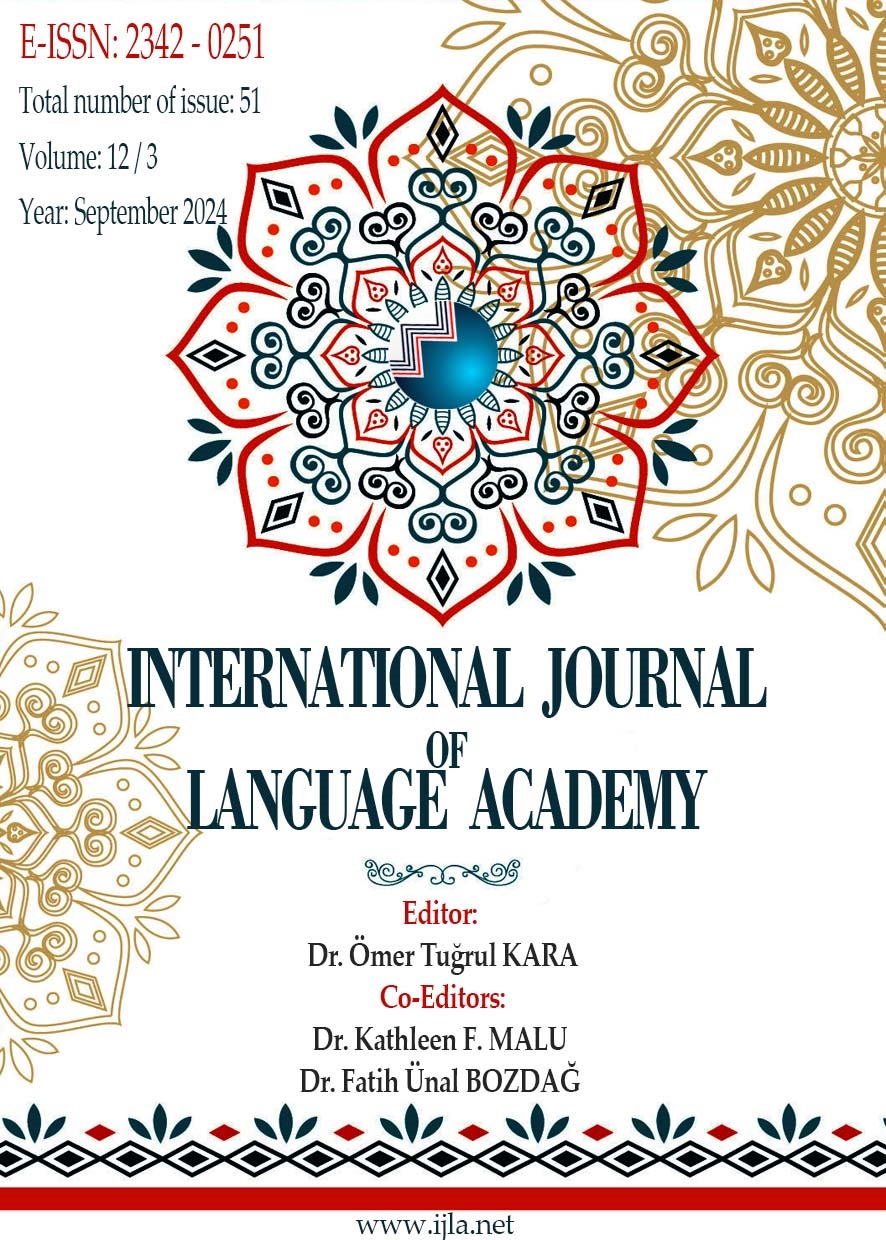Author :
Abstract
Teknoloji ve iletişim çağının sunmuş olduğu olanaklar eğitim alanında birtakım değişiklikleri beraberinde getirmektedir. Bu çalışma yabancı dil olarak Fransızca öğretiminde sanal gerçeklik teknolojisinin kullanımına yönelik öğretmen ve öğrenci görüşlerini tespit etmek üzere gerçekleşmiş ve bu söz konusu değişikliklere zemin hazırlayan bir araştırma alanı oluşturmuştur. Bu bağlamda sanal gerçeklik teknolojisinin başvurulması durumunda Fransızca öğrenim/öğretimine yönelik katkıları tespit edilmeye çalışılmış, yaygın olarak kullanılmama sebepleri sorgulanmış ve Fransızca derslerinde kullanılabilmesine yönelik saha araştırması yapılıp önerilerde bulunulmuştur. Bu kapsamda çalışmaya Ankara ilinde bulunan MEB’e bağlı liselerdeki 400 öğrenci, Ankara Gazi Üniversitesi Yabancı Diller Yüksekokulu’nda görevli 3 Fransızca öğretim görevlisi de dahil olmak üzere 16 öğretmen katılmıştır. Veri toplama araçları olarak görüşme formu ve anket kullanılan bu araştırmada tümevarım analizine başvurulmuştur. Tümevarım analizi için öncelikle görüşme formlarından elde edilen veriler incelenmiş bu verilerin değişkenlerle olan ilişkisi analiz edilmiştir. Nicel verilerin analizinde betimsel istatistik yöntemleri kullanılırken, sanal gerçeklik ölçeği puanı ile sınıf düzeyi değişkeni arasındaki ilişkiyi test etmek üzere tek yönlü varyans analizi istatistik yöntemleri kullanılmıştır. Çalışma ileri teknolojik araç-gereçlerin eğitim alanına uyarlanması bağlamında yol gösterici bir analiz çalışması olmuştur. Karma yöntem deseninin çeşitleme (farklı yöntemler aracılığıyla sonuçların doğruluğunu, benzerliğini ve ilişkisini bulma amacı) gerekçesiyle araştırma öğrenci ve öğretmenlerin yabancı dil olarak Fransızca öğretiminde sanal gerçeklik teknolojisinin etkisine yönelik ortak ve zıt fikirlerin ortaya çıkarılmasında yol gösterici veriler sunmuştur.
Keywords
Abstract
This project was carried out to determine the views of teachers and students on the use of virtual reality technology in teaching French as a foreign language. In this context, the positive/negative aspects of virtual reality technology in French language teaching were identified, why this technology is not widely used was questioned, and suggestions were presented for its use in French lessons. In this context, 16 teachers participated in the project, including 400 students from certain high schools in Ankara and 3 academicians from Ankara Gazi University School of Foreign Languages. This project used interview forms and questionnaires as data collection tools, and inductive analysis was applied. For inductive analysis, firstly, the answers given by the teachers to the questions in the interview form were read, and the general view of the answers was revealed. Then, the answers were analyzed again in relation to the relationship between the answers and the variables. While descriptive statistical methods were used to analyze quantitative data, one-way analysis of variance statistical methods was used to test the relationship between the virtual reality scale score and the grade level variable. The results of the study have been a guiding analysis study within the scope of trying to ensure the adaptation of advanced technological tools and equipment to the field of education step by step. Along with the mixed method design's reasoning of triangulation (the aim of finding the accuracy, similarity, and relationship of the results through different methods), the relationship between the common and opposite opinions of students and teachers regarding the effect of virtual reality technology in teaching French as a foreign language was revealed.





